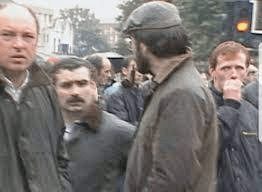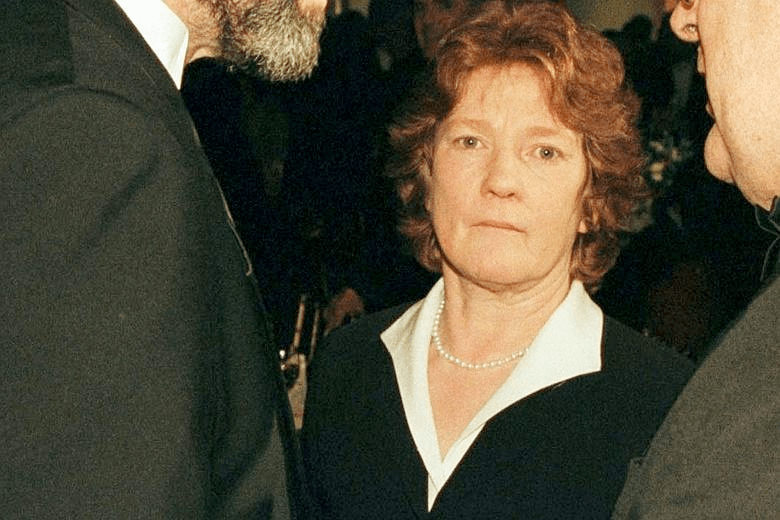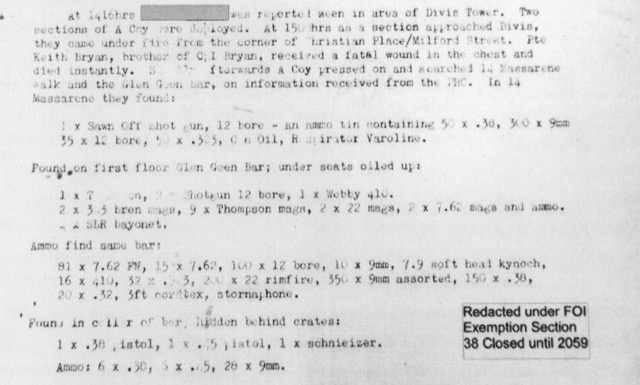His name is Ian Hurst although for a long time this former intelligence officer in the British Army’s Force Research Unit (FRU) called himself ‘Martin Ingram’ whenever he met the media. A chirpy Mancunian who served with the FRU in Derry, he broke with the military and gradually emerged in public with secrets to tell, angered by what he believed was the shameful way an agent he ran in the IRA had been treated.
The Derry IRA’s quarter master’s department included in its ranks one Frank Hegarty, whose career in the IRA had been controversial. He had been expelled some years before by Ivor Bell, then the chief of staff, when it was discovered that he had been having an affair with the wife of a soldier in the Ulster Defence Regiment (UDR) and had failed to tell his superiors. And so it was that eyebrows were raised when the news filtered through that Hegarty was back, a move that had been arranged by Martin McGuinness.
Hegarty’s exposure as a spy and death at the hands of the Internal Security Department – the IRA’s spycatchers – led to more internal speculation about McGuinness’ true loyalties. The Belfast-based veteran IRA leader, Brian Keenan was one who did not keep those doubts to himself. The pair had never got on and Keenan blamed McGuinness for facilitating his arrest in Northern Ireland and subsequent deportation to a London court where he received a lengthy sentence for IRA bombings in England in the early 1970’s.
At the same time it was part of daily politics in the Provos to gut and slander rivals and potential rivals. It could be a very bitchy organisation, but it was dangerous bitchiness.
Hegarty was the Derry Quarter .Master and so he was alerted to the arrival of boxes of modern automatic rifles which had recently been smuggled from Libya, a gift from that country’s complicated leader, Col Gaddafi. Hegarty’s job was to prepare safe dumps for such weapons. But he was also working for the British Army’s Force Research Unit (FRU) which led the military’s intelligence battle with the IRA and so the British were privy to every movement of IRA weaponry in his area of responsibility. Hegarty would later tell the IRA that his handlers ultimate aim was to install him as the IRA’s Quarter Master General.
The guns were supposed to be hidden in a safe dump, but safe it certainly was not. Via Hegarty the FRU learned of the weapons shipment and told their political masters who duly informed Dublin. Since the weapons were destined for a safe dump somewhere in Co Donegal, the Dublin government had to be informed. And since the weapons were moving from a dump in Dublin’s jurisdiction, Taoiseach Garret Fitzgerald had first dibs and sought an operation to interdict the weapons, thereby inflicting a very public blow on the IRA.
But the operation came at a high cost to the British. The finger of suspicion, pointed by Southern IRA leaders, moved immediately in the direction of Hegarty and so the Derry QM ran for the hills, thereby confirming the doubts. Ever since, the British have blamed Garret Fitzgerald for squandering a potentially priceless agent at the very heart of the IRA.
Hegarty fled and was moved to a safe house somewhere across the Irish Sea, but apparently was in regular telephonic contact with his family back in Derry. The only way to explain why FRU agent Martin Ingram/Ian Hurst subsequently behaved in the way he did, breaking the omerta rule and threatening to expose the spy at the very heart of the IRA, is anger at the way he believes his agent, Frank Hegarty was betrayed by the FRU, or whoever pulled their strings.
So it was that an apparently homesick Hegarty would phone his mother’s home, apparently quite regularly, until one day it was Martin McGuinness at the other end. It would be more than astonishing if someone from British intelligence was not listening in as well but whatever about that, the upshot was that Hegarty was tricked by McGuinness’ false assurances of his safety, returned to Ireland and walked straight into his grave. Well actually not quite straight. He was taken away for questioning so he might have lived for a few more days, but not more than that. What the FRU’s reaction was to all this remains a mystery. Was Hegarty a lamb manoeuvred to slaughter, and if so, why? What efforts were made to ensure that Hegarty would not put himself in such obvious danger?
No-one was more angered by, and suspicious of Hegarty’s fate than his FRU handler Ian Hurst/Martin Ingram who slowly but surely, with the deftness of a skilled tradesman, and the patience of a trout fly fisherman, eased the full story out, or as much of it as he can safely tell and this after years of harassment from government agencies and lawyers. Many questions remain to be answered to be sure, but the essence of what happened or at least is suspected to have happened, is now known and it smells.
This is how we know that Hegarty was allowed to walk himself back to death. The question still hanging unanswered in the air quite simply is: was he sacrificed and if so, why?









You must be logged in to post a comment.